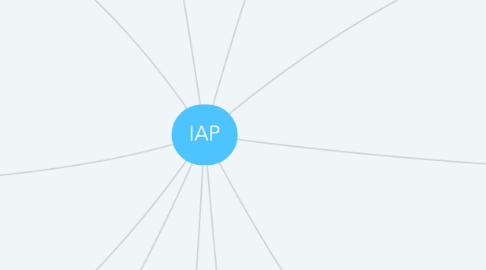IAP
by Karel Kural


1. Learnings
1.1. Data is a gold
1.2. Convince for the need for harmonization
1.3. Shippers are key stakeholders for the next steps, and should be front runners to establish IAP
1.4. There is a need to establish a national base facilitator in each EU state which can be seen as TCA Europe
1.5. UVAR pilots can be used as start platform (ReVEal proejct)
1.6. There exist a Workgroup DTLF Digital Transport and Logistics Forum (Ricardo is in the lead)
1.7. Use 4PL structure
1.8. Data sharing is a must to forecast and plan arrival of cargo into factories
1.9. Policymakers needs to mandate the provider and most likely the Facilitator who should be above all independent
1.10. Facilitator can be consortium driven institute, which needs to be trusted
1.11. IAP is not (yet) officially positioned within ACEA and needs mutual commitment of OEMs
1.12. In NL national data house does not want to play a role of facilitator
1.13. Being facilitator means being not technical it is more of a policy issue
1.14. The key real-time data which the infrastructure planners and owners requires to support IAP are: GPS location, loading state of the vehicle
1.15. EC will release revised directive on weight and dimension on 9.12.2021
2. Vision
2.1. Messenger (people to spread the news, lobby)
2.2. 3-Phase program (TEN-T, UVAR+EVAR, Harmonized Rules and Regional Parameters)
2.3. Focus on corridor pilot (ideally TEN-T) Norway/Denmark/Germany/Netherlands or Spain/Portugal or eventually Netherlands/Germany/Eastern Europe Netherlands/Belgium/France (done by train)/Spain/Portugal
2.4. Harmonization at lowest possible level but full transparency for user. General rules EU wide, only parameters depending local circumstances can vary
3. Good Examples
3.1. Scandinavian HCV for timber
3.2. EMS2 in Spain
3.3. EMS2 in Finland
3.4. EMS1 in Scandinavia, Benelux, Spain, and Portugal, Germany, Czech Rep., Estonia....
3.5. ReVeAl project
3.6. Revere project (EMS2+EMS1 automated)
3.7. Exceptional Transport handling
4. Stakeholders
4.1. Users
4.2. Planners&Owners
4.3. Providers
4.4. Facilitators
4.4.1. what are the fundamental elements of this stakeholder (explore it further)
4.5. Policymakers
4.5.1. Verification and Enforcement (execution)
4.5.2. Policy Creators (creators)
5. Funding to Execute
5.1. Funding for the TF
5.2. Funding for the Pilots
6. Challenges
6.1. Make IAP operational on EU level
6.2. Start using dynamic data instead of static data
6.3. how to get all data on one platform and make it accessible
6.4. Establishment of TCA like institute in Europe
7. Success Factors
7.1. Link to the EU Green Deal
7.2. Gain trust by all involved parties
7.3. Multimodality (mainly road and rail combined use)
7.4. Find the right people (messenger + drivers)
7.5. New Technologies (EU Green Deal)
7.6. Support from the Shippers Council
7.7. Logistics business case at the background
7.8. Scalability of deployment
7.9. Sustainability and clean image
7.10. Flexibility and adaptability
7.11. Clarity in methodology
7.12. Clear legal background to get an access on safety related, and weight related data 27.5.2021 implementation of new directive
7.13. Use the lobby channels (VDA, ACEA, ALICE….)
7.14. Access to IAP on board systems must become simple, easy, cheap.
7.15. Data sharing should be rewarded, and safe data sharing is essential for success
7.16. Stop talking in the circle and open the discussion towards all identified clusters
7.17. IAP needs to gain a political weight
8. Barriers for implementation
8.1. Fear from Complexity
8.2. Myth of the Modal Shift + Rail Lobby
8.3. RDW & TUV-like institutes which wants to stay in control
8.4. Hesitation to share the data
8.4.1. OEM's on the vehicle emissions
8.4.2. Users on the logistics process data
8.5. Mandatory on board weighting device for vehicles required by the planners and owners
8.6. Gain trust from all parties
8.7. financial management of dynamic & flexible pricing for access to infrastructure
8.8. Access to systems must become simple, easy, cheap and causing no high invest in software and hardware. Open source system
8.9. 27 different jurisdictions in EU which might be a barrier for the harmonization
8.10. Introduction of IAP to already existing fleet of vehicles
8.11. Currently there are no facilitators in EU (comparable to TCA in AUS)
9. Literature & Resources
9.1. Study on DTLF by Ricardo, Casullo Lorenzo and Charlotte Brannigan
9.2. (Moving Freight with Better Trucks + HCT) by OECD
9.3. Proceedings of HVTT's
9.4. Input from Stan Wandel
10. Opportunities to introduce IAP
10.1. Time slots planning
10.2. Intermodal Transport (CT)
10.3. Gaining Clean & Sustainable Image
10.4. Control over Heavy transport to protect existing infrastructure
10.5. Digitalization
10.6. Improved liveability in the cities (reclaiming streets)
10.7. Use ACEA members not as OEM's but as logistic service users (inbound shippers)
10.8. Involve new CEDR WG on HGT (Loes and Thomas)
10.9. Traffic monitoring
10.9.1. Real-time position
10.9.2. Real-time loading state
10.10. Road Safety enhancement
10.10.1. Congestion avoidance
10.10.2. Societal protection
